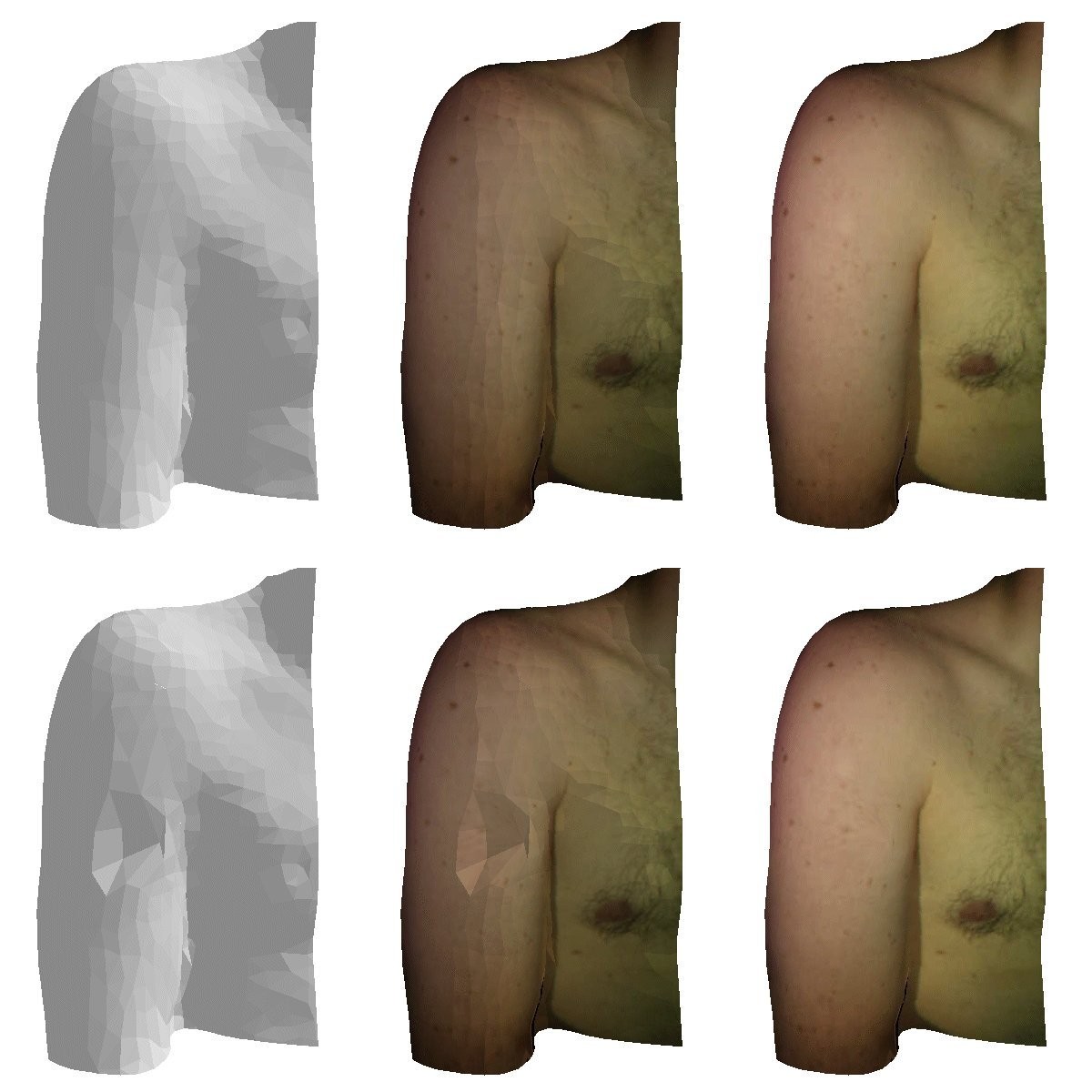

|
|
|
Jean-Christophe Nebel
|
|
 |
Soft Tissue Modelling
Position: Research Assistant
Funding: /
Duration: 2000
|
| Project description |
In this project we investigate how from 3D surface data (generated from 3D scanners) it is possible first to create 3D volumetric meshes of soft tissues suitable for the finite element method (FEM) and then to deform them using the FEM.
The soft tissues, we are interested in our research, consist of three elements: the epidermis, the dermis and the subcutis. The epidermis is the outermost layer that contains the primary protective structure and the dermis is a fibrous layer that supports and strengthens the epidermis. The subcutis is a subcutaneous layer of fat beneath the dermis that supplies nutrients to the other two layers and that cushions and insulates the body; the subcutis is usually connected to muscles.
Since the anatomy of these soft tissues shows a structure of three layers, volumetric meshes based on this structure are well suited to simulate accurately soft tissues in most parts of the body. However for the fatty parts of the body, e.g. belly and female breasts, another structure should be used: the fatty part should be represented by a volumetric mesh instead of a single layer.
Scanned data obviously provide the surface of the upper mesh of the structure, we can make the assumption that the thickness of the different layers is constant on a small area. Hence we generate the volumetric mesh by selecting an area of a scan and duplicating this surface mesh to generate the frontiers between the three layers. These meshes, placed in parallel according to the layer thicknesses, are then connected to each other. The meshes generated by 3D scanners are supposed to be composed of triangles, or can be easily converted into triangular meshes, so the connections between two parallel meshes of that kind generate a layer of prism elements. Physical properties are then assigned to each prism element accordingly to the layer it belongs to.
Finally the nodes of the lowest frontier of the fat layer are connected to muscles. Since muscles are very hard - compared to the other soft tissues - we assume that they cannot be deformed by realistic and non-destructive external forces. Hence muscles can be deformed only if they move by themselves. Forces are then applied on the exterior of the mesh and deformations are computed using the FEM.
| Research interest keywords |
computer graphics, 3D scanners, FEM, soft tissue modelling
| Publications |